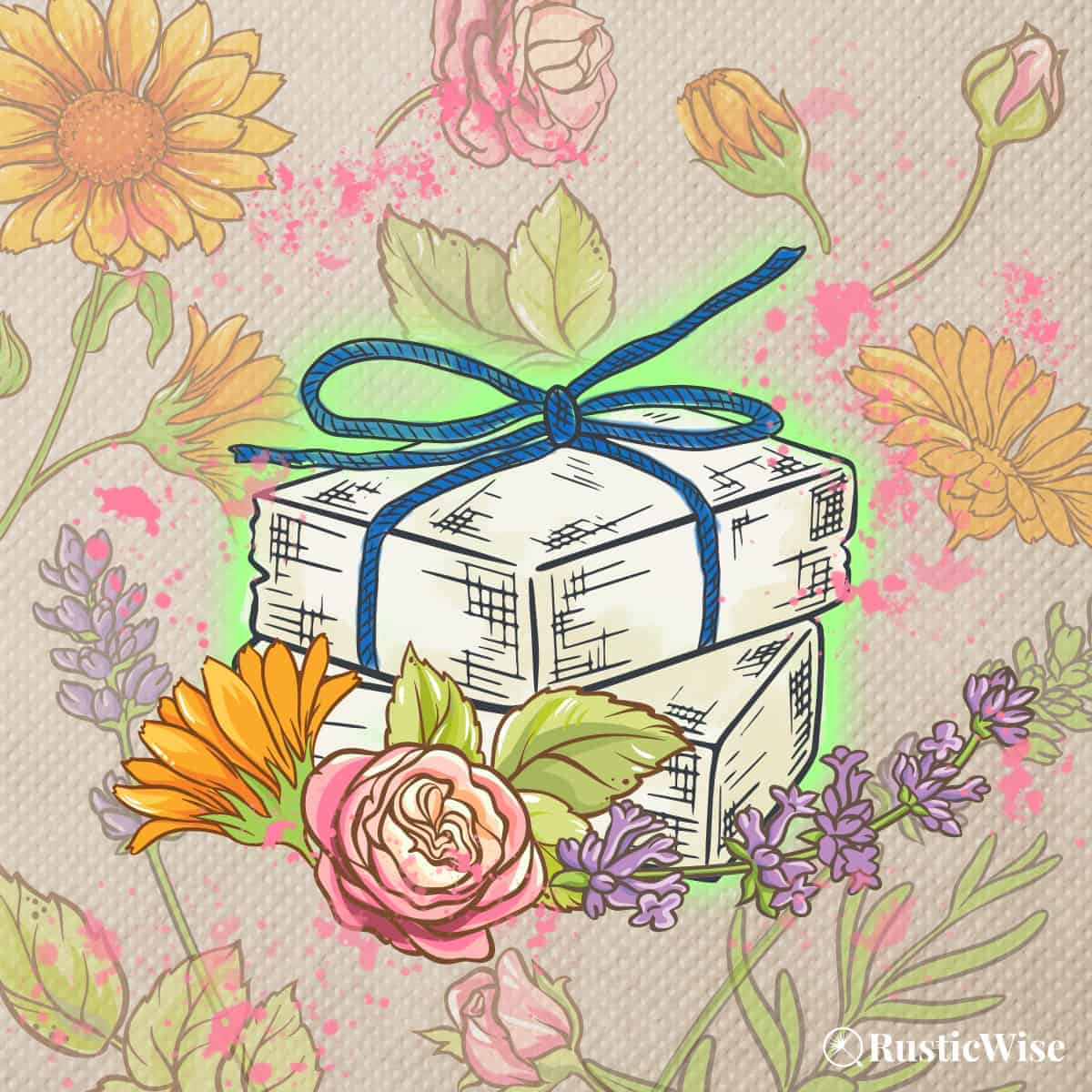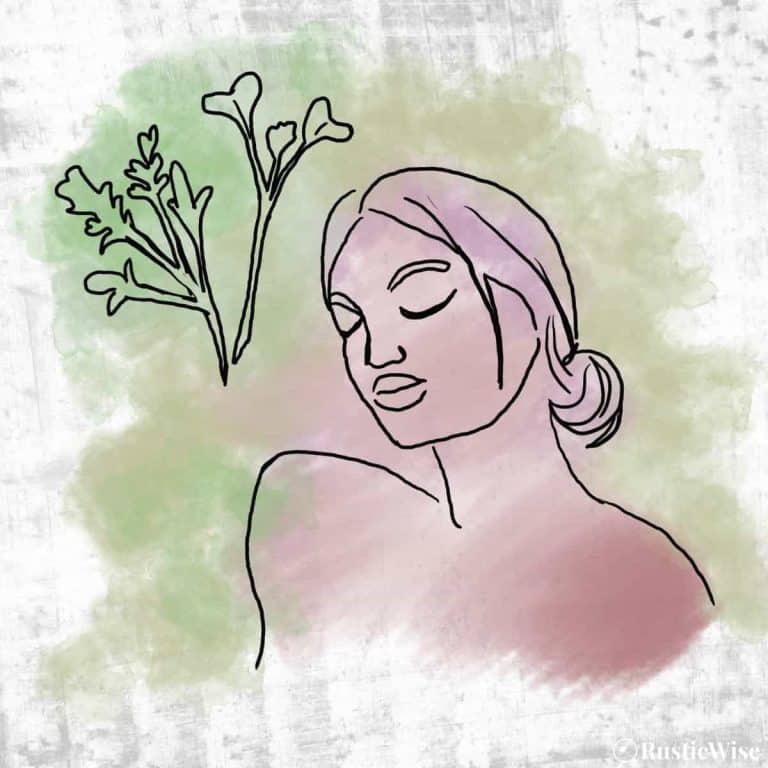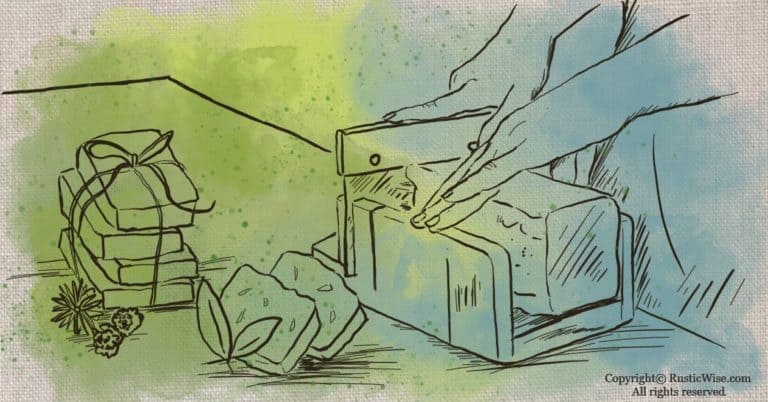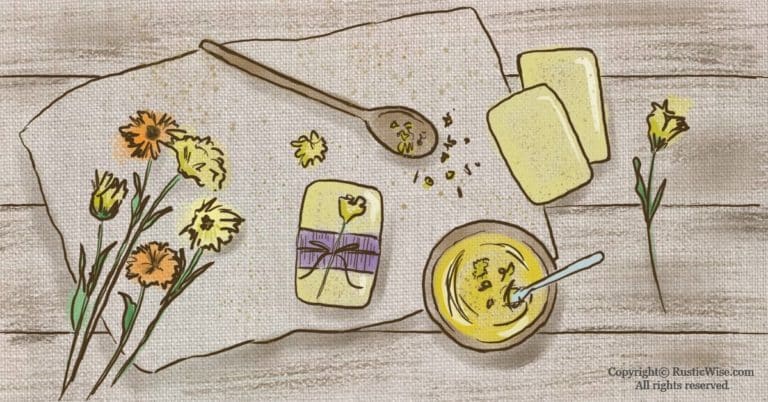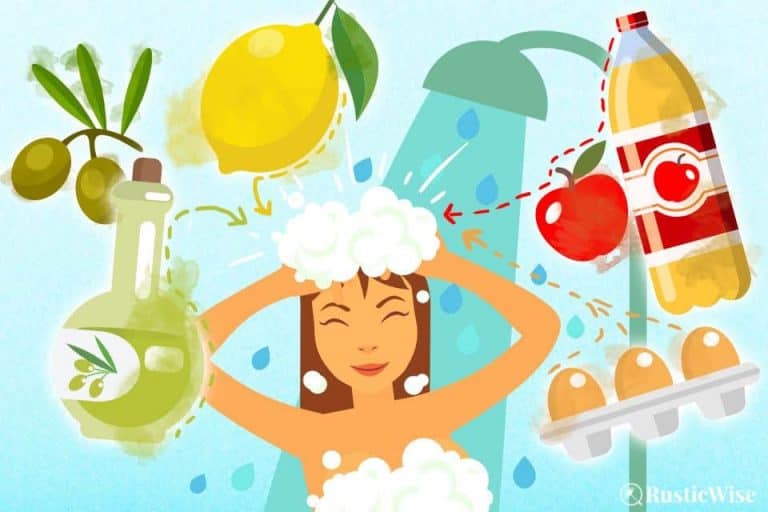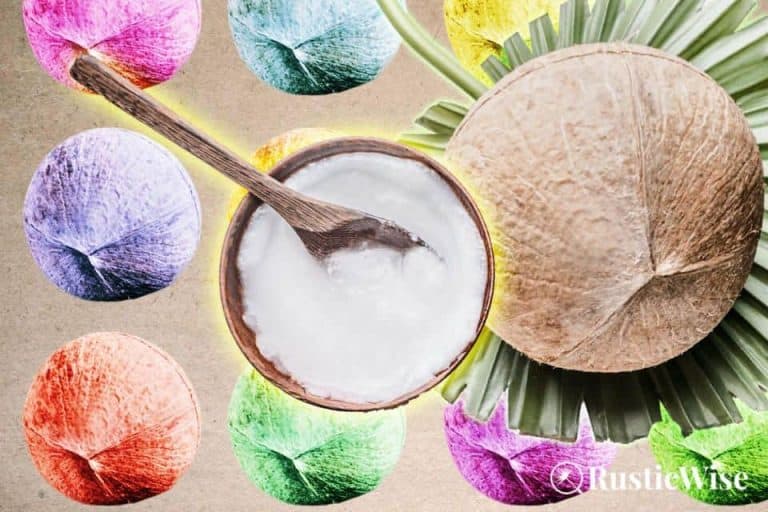The Best Natural Ingredients for Homemade Soap: Herbs, EOs + More
Not only is making your own soap a practical and creative hobby, it also allows you to customize the ingredients in each batch and avoid harmful chemicals. But with tons of ingredients out there, it can feel totally overwhelming figuring out which ones are good choices for making soap.
That’s where this big list of all the best natural ingredients for homemade soap comes in. I’ll go over how much additives to add, how to add it, and how it affects the properties of the soap. When it comes to making homemade soap, the additives you choose play a crucial role in the final product’s quality and effectiveness.
Let’s explore the best natural ingredients that you can use to create your own homemade soap, so you can tailor each batch to your unique needs.
What are some basic ingredients for making natural soap?
The basic ingredients for making natural soap are oils/fats, lye, and water. That’s it! These 3 simple ingredients are all that’s needed to make a basic bar of soap. Different types of fats, oils, or butter lend various properties to the finished bar.
But you didn’t start making soap from scratch to make a “basic” soap bar, did you?
To have fun, get creative, and take that batch of soap from basic to glorious, you can add ingredients from mother nature such as essential oils for fragrance, natural colorants, herbs, spices, and flowers for additional benefits and aesthetics.
Just so we’re on the same page, this article focuses on natural additives for soap, NOT oils or butters.
👉To learn more about oils, fats, and butters, check out our handy guide on using vegetable oils for soap.
What are the benefits of adding herbal ingredients to homemade soap?
Natural ingredients not only provide nourishment to your skin but also offer various beneficial properties. For example, if you want a soap that exfoliates, coffee grounds, or ground oats are two surefire bets. Want a skin-purifying cleanser? Add some facial clay.
Adding herbal ingredients like calendula, lavender, or chamomile to homemade soap can contribute various skin-nourishing properties, soothing effects, natural fragrance, and visual appeal, enhancing the overall quality of the soap.
Cold process (and hot process) vs. melt and pour soap
Your soapmaking method will determine what type of additives you use.
When incorporating botanicals into cold process (or hot process soap), it’s important to keep in mind that lye will wreak havoc on certain additives. This caustic, yet fundamental ingredient will fade some colors and scents. One soap ingredient that comes to mind is lavender petals. Those lovely purplish hues will turn brown after lye has its way, sorry.
Other flowers such as calendula petals keep its golden hue remarkably well.
And, while fruit purees are perfectly fine for cold process soaps, they’re no-no’s for adding to melt and pour soap.
Since melt and pour soaps aren’t really undergoing a transformation (the soap bases are already fully saponified), any raw ingredients will soon go rotten. (So, let’s save those lovely purees for something else, okay?)
Stick with using only dried botanicals when making M & P batches.

Credit: Vector State
4 Ways to add natural ingredients to handmade soap
As with many things in life, there is more than one way to get the job done. Here are 4 ways to spice up your next soap batch with natural elements:
- Oil infusion involves steeping natural ingredients in carrier oils such as olive oil, or almond oil. This allows the oils to absorb the beneficial properties of the natural ingredients, which are then used in the soap making process. You can use the cold infusion method (which takes several weeks to allow the oils to coax out the properties), or hot infusion (which is quicker).
- Lye water infusion involves making a “tea” with hot water to extract the beneficial properties of natural ingredients like herbs, flowers, or spices. Once cooled, this infused water is then used to make your lye water, imparting its subtle natural properties into the final product.
- Natural ingredients can also be added directly into the soap batter and mixed before it is poured into molds. This can include ingredients like oatmeal or essential oils, which provide exfoliating or aromatic properties to the soap.
- Natural elements add a lovely touch to the the top of the soap. Sprinkled dried flowers, herbs, or exfoliating ingredients like poppy seeds or oatmeal, not only add visual appeal but also provide additional benefits to the skin when using the soap.
Using natural ingredients in these ways allows you, the soap maker, to create unique and beneficial products that cater to different skin types and preferences.
Tips on incorporating additives to handmade soap
- Try to stick with organic herbs and flowers: If you’re foraging your own plants avoid using any that have been sprayed with pesticides or chemicals. If you’re buying dried botanicals, there are many certified organic options available.
- Beware of skin irritation: Just because something is natural doesn’t mean that it can’t irritate skin. Cinnamon is fine in small doses, but when added liberally, it can cause itchiness or rashes. Sometimes, a little goes a long way!
- Keep notes: To level up your DIY soapmaking game, keep detailed notes. For example, a few things you may wish to record are: the temperature of the lye solution and the oils when they are mixed together; any additives or essential oils used and their measurements; any colorants or swirls added and the technique used; any observations during the cutting and curing process, such as the hardness and texture of the soap; and finally, notes on the fragrance and how it develops over time.
- Start small: It’s easy to overdo it, so use small quantities of additives. Also, when using any type of new soap ingredient, start by making a smaller batch then scale up later if it’s successful.
How much additives to use in natural soapmaking?
There’s no rule written in stone, but it’s always better to use a bit less than too much. The amount of additives to use really depends on your individual recipe and preferences. Here are a few general guidelines (use your judgment to adjust as necessary):
- When adding dried herbs, start with between ½ teaspoon to 1 teaspoon per pound of soap. Add at trace. If your recipe is for a 2-pound batch of soap, you can use up to 2 teaspoons.
- For exfoliating ingredients such as coffee grounds or colloidal oatmeal, start with about 1 teaspoon per pounds of oils and add to soap batter at trace. You can add slightly more if desired.
- When making lye water tea, start with 2 tablespoons of dried botanicals per cup of water. If using fresh herbs, use a generous handful.
- If infusing oil, fill a mason jar with dried herbs (fresh herbs may grow mold) and fill with an oil of your choice so that all herbs are completely submerged with at least 1 inch of oil on top.
- When adding essential oils, use a fragrance calculator as each oil is unique with varying strengths. Or follow the instructions on a reliable recipe.
List of natural ingredients for homemade soap
Now, let’s dive right into this list of goodies!
I’ve organized natural ingredients for homemade soap into the following sections:
- Soapmaking herbs and botanicals
- Additives (clays, coffee, etc.)
- Liquids (wine, beer)
- Essential oils
- Natural colorants
Soapmaking herbs and botanicals
Have fun experimenting with this list of all-natural soaping ingredients. This is by no means a comprehensive list, but it’s a pretty solid start.
- Alkanet root: Alkanet root is a wonderful natural dye that can add vibrant color to your handmade soaps. It produces shades of red when used, from light pink to a deep burgundy. To use it, simply grind dried alkanet root into a powder and add it to your soap recipe after trace. Start with a small amount—about ¼ teaspoon per pound of oils—and adjust from there to achieve your desired tone. The color will set during saponification. Alkanet root is also high in antioxidants, so it not only dyes your soap beautifully, but may provide skin-nourishing benefits as well.¹
- Annatto seeds: Annatto seeds add a lovely sunset orange color to handmade soaps. Like alkanet root, they contain natural pigments that readily color fats and oils during the saponification process. To use annatto, gently heat the seeds in oil to draw out the color, then blend the infused oil into your soap recipe.¹ Start with a ratio of ¼ to 1 teaspoon of seeds per pound of oils. The color intensity can be varied by adjusting the amount used.
- Calendula petals: Calendula petals provide anti-inflammatory benefits. It’s a popular additive for their bright color and skin-soothing benefits. The cheerful orange-yellow flowers (that hold up well against lye!) can be dried and crushed, then added directly to soap recipes. Calendula imparts both an attractive color as well as antifungal, anti-inflammatory and wound-healing properties. Try sprinkling some crushed petals on top of soap too.
- Chamomile: Chamomile is the perfect herb for those seeking a calming and relaxing experience. This popular herb has anti-anxiety and anti-inflammatory properties Whether infused in the oils or sprinkled on top, chamomile imparts a subtle golden color and its relaxing scent. The petals soften skin while living up to chamomile’s reputation as a soothing botanical.
- Citrus: Finely grated or ground lemon zest, orange, grapefruit or lime peels provide natural fragrance and gentle exfoliation. Avoid using large peels in cold process soaps as it will turn brown.
- Dandelion: This highly versatile plant, is not only edible, but packed with beneficial compounds. Rich in vitamins, dandelion has anti-aging and skin-soothing properties that make it a wonderful addition to handcrafted soaps. The sunny yellow flowers can be used to infuse oils, imparting both subtle color and dandelion’s skin-loving compounds. The leaves and roots can also be used as infusions.
- Forsythia: With antiviral properties, forsythia’s yellow petals may add a gentle golden touch to your soap with used as an infusion.
- Fruit purees: Using fruit purees is a more advanced soapmaking technique as it can be tricky to incorporate into cold process soap properly and can cause batter to heat rapidly. Making a puree is as simple as placing fruits in a blender with distilled water. Purees contain extra sugar, water, and sometimes fat which can alter the recipe. Stick with adding roughly 2 tablespoons (1 ounce) per pound of soap. A few purees to try include carrot, cucumber, pumpkin, and strawberry.
- Jewelweed: Great for making soap for soothing poison ivy rashes and other skin conditions such as inflammation. Infuse oils or lye water with this botanical.
- Juniper berries: Juniper berries have antibacterial, cleansing, and toning properties with an invigorating fragrance. You can buy dried whole juniper berries and grind them with a coffee grinder, spice grinder, or with a mortar and pestle. Grind juniper to a coarse powder, leave in larger chunks for more exfoliation, or leave whole when sprinkled on top of soap.
- Lavender petals: A favorite amongst many in the natural DIY crowd, dried lavender buds or petals impart a lovely, calming fragrance. Infuse in oils, or in lye water tea. It’s NOT recommended to incorporate into soap batter as it will turn brown. Instead sprinkle dried petals on top.
- Nettle: Surprisingly, stinging nettle (the same plant that causes itching and stinging when brushed against) is a great natural soap ingredient. Nettle has been used for centuries for its cleansing and soothing properties. When used in soap, it can help to cleanse the skin and reduce inflammation, making it an ideal ingredient for those with sensitive or irritated skin. It also has a high mineral content, including magnesium, iron, and calcium, which can nourish and rejuvenate the skin. Plus, it adds a natural green color to the soap!
- Poppy seeds: Finely ground poppy seeds are an exfoliating addition and provide a nice scrubby texture to soap bars.
- Rose petals: Dried rose petals are a classic addition to handmade soap. Their subtle fragrance and soft pink color lend an air of romance and luxury to any bar. Dried petals can be crushed and sprinkled on top of soap as a finishing touch. Along with their lovely aesthetic appeal, roses also have skin-softening properties. Great for oil and tea infusions.
- Rosemary: This versatile herb adds an uplifting aromatic experience to handcrafted soap. It also has antimicrobial and antioxidant properties, which can help to cleanse and protect the skin or scalp. To infuse, gently heat fresh or dried rosemary needles in oil for a few weeks before using the infused oil in soap recipes. Rosemary is popular in hair products such as herbal rinses or shampoo bars as it has purported scalp stimulating properties to encourage healthy hair growth.
Tip: To prevent lavender flowers from turning brown from the lye, sprinkle a few dried petals onto soap once it has reached gel phase. Then spray with rubbing alcohol. Hopefully, this keeps those lovely petals purple!
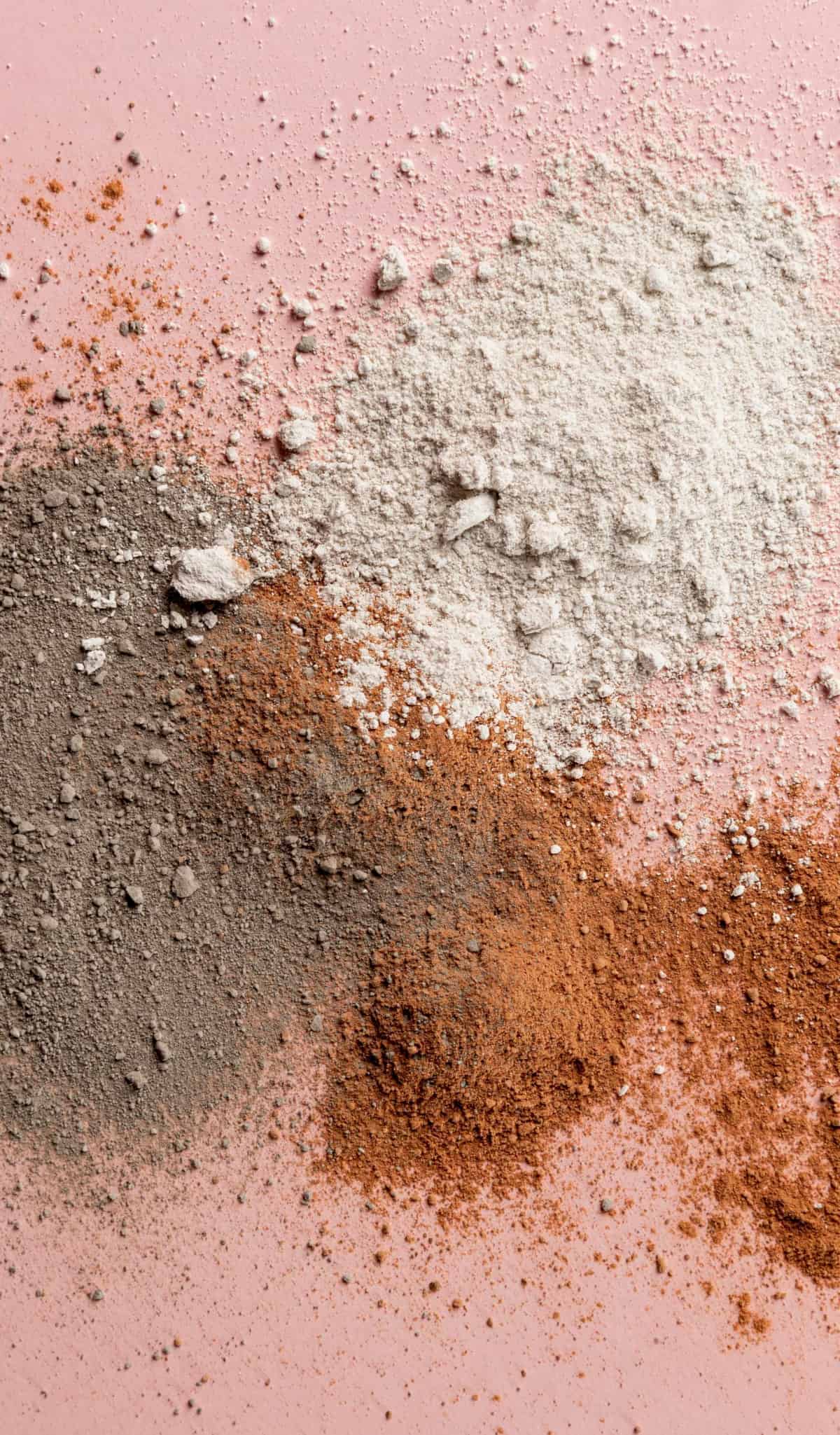
Credit: Vector State
Other soapmaking additives
- Activated charcoal: Charcoal purportedly draws impurities from skin and provides a striking black color.
- Aloe: Soothing, moisturizing, and healing, aloe vera gel can be used as part of the water in a soap recipe. It makes lovely bubbling bars!
- Coffee grounds: Finely ground coffee exfoliates and energizes skin, and gives soap an energizing aroma. Coffee is also anti-inflammatory, antibacterial, and packed with antioxidants making it a no-brainer for a shower or kitchen soap. Used grounds hold up better in soap, so brew a cup of joe, and save the leftovers for making coffee soap. Learn how to make coffee soap and other kitchen soaps.
- Clays: Cosmetic clays like kaolin or French green clay add slip, mild exfoliation, and cleansing properties to soap. Some types of clay are also good as colorants, such as rose clay.
- Cocoa powder: Adds a lovely chocolate-y coloring to homemade products. Avoid using too much as you don’t want your bubbles turning brown!
- Honey: Honey is a natural humectant that helps retain moisture in the skin. Honey soap is a popular soap additive as it’s a great moisturizer, but heats up quickly when added to batter as it contains sugars.
- Loofah: There are manmade plastic loofahs (think shower puffs), then there are also natural loofahs which are made from a dried gourd. Finely ground loofah makes an exfoliating soap, or you can use sliced loofahs.
- Oats: Finely ground oats make a gentle exfoliant and give a creamy lather to soap. Oats contain vitamin E which helps to nourish skin.
- Spirulina powder: A type of blue-green algae, spirulina powder has many skin nourishing properties and adds color and nutrients to soap.
Using natural colorants in homemade soap
If you want to add a natural hue to your bar soap, just turn to the colors nature provides. There are many ingredients like clays, herbal powders, and plant-based colorants to add beautiful and vibrant colors to your homemade soap creations without using synthetic dyes or artificial colors.
Here are a few ways to achieve your desired soap color using plant-based compounds.
- Yellow: Annatto seeds, calendula flowers, ground ginger, and turmeric powder.
- Orange: Pumpkin puree, carrot purree/juice, and paprika.
- Pink/Red/Purple: Rose clay, madder root powder, and alkanet root powder.
- Blue: Indigo powder and woad powder.
- Green: Spinach powder, spirulina powder, and dandelion leaf.
- Brown: Cocoa powder.
- Black: Activated charcoal.
Soapmaking liquids
Using alternative liquids in soap making allows for interesting textures, scents and properties. Working with honey, milks, and wine or beer will require soaping at lower temperatures.
- Wine: Red or white wine contributes antioxidants and polyphenols to soap making it a skin-loving choice. The color of the wine will affect the coloring of the finished product. This replaces some of the water in your lye mixture.
- Beer: Soap made using this fermented beverage produce generous, creamy lather. Whether opting for a light lager, amber ale or dark stout, beer imparts a subtle golden color to finished soap. To incorporate beer, substitute a portion of the liquid in a recipe for the same amount of beer.
- Coconut milk: Coconut milk adds a luxurious touch of moisture to handcrafted soap. Its gentle fatty acids also leave skin feeling soft and supple. To use coconut milk, substitute a portion of the water in a soap recipe with canned full-fat coconut milk and blend thoroughly. The creamy white liquid lends soap bars a lovely sheen and plenty of bubbles!
- Goat’s milk: Goat’s milk creates an exceptionally conditioning bar with its high fat and protein content. A bar of goat’s milk soap is high in lactic acid which helps exfoliate skin while gently moisturizing it.
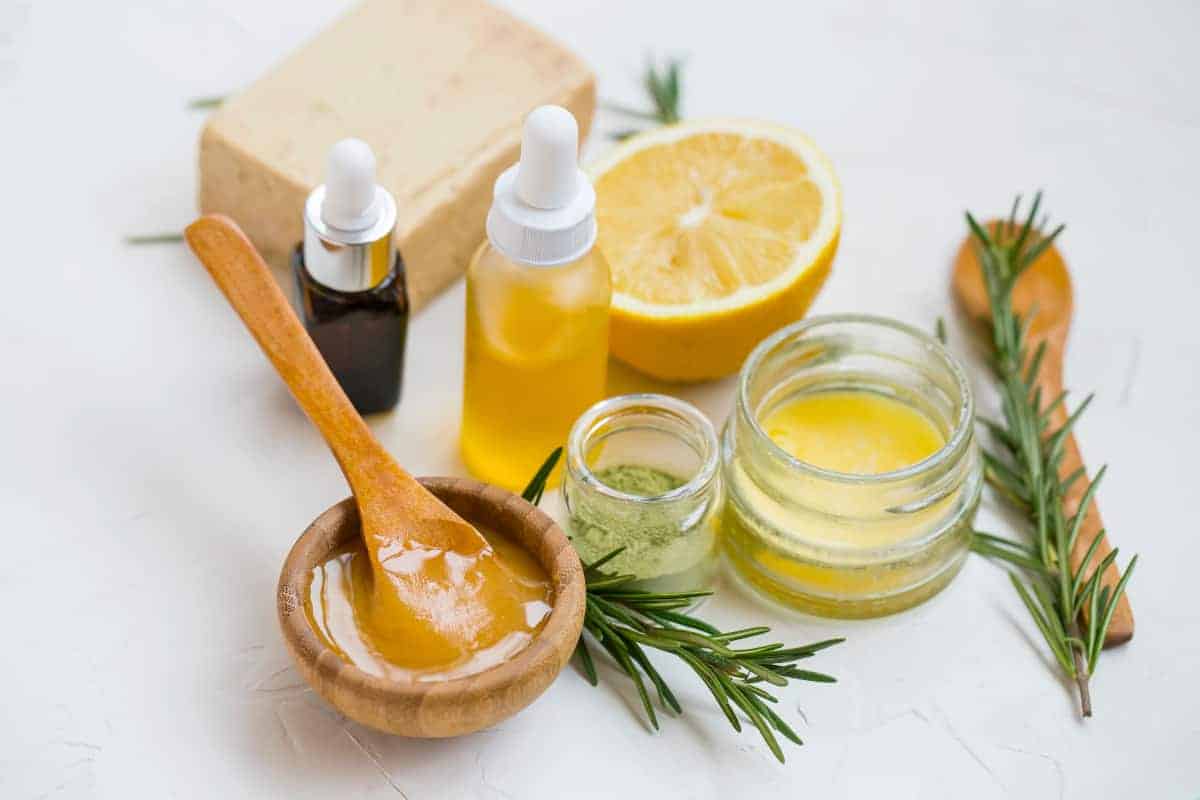
Essential oils for soaping
Adding essential oils to soap making can provide various benefits. Essential oils not only enhance the fragrance and sensory experience of the soap but also offer therapeutic properties. They can be used to alleviate stress, promote relaxation, or even treat specific skin conditions. Different oils have different effects, so selecting the right combination can create a unique and personalized soap.
Not to be confused with fragrance oils (which are manmade), essential oils derive from natural plant material, such as flowers, leaves, bark, and roots, through processes like steam distillation or cold pressing. They contain the natural aroma and properties of the plants from which they are derived, and are often used in aromatherapy, as well as for medicinal and cosmetic purposes.
Safety note: Essential oils are highly concentrated and should be used with caution, as they can be potent and may cause irritation if not used properly. Some oils are not safe for children or pregnant women. Please do your research before using.
Here are a few popular essential oils for soaping:
- Eucalyptus essential oil is commonly used for its soothing and decongestant properties, making it an excellent choice for relieving coughs and cold symptoms.
- Fir needle essential oil is the go-to if you’re looking to create an aroma of “just went walking in the woods.”
- Lavender essential oil is well-known for its calming and relaxing effects, making it a popular choice for promoting a good night’s sleep and reducing anxiety.
- Lemon essential oil provides an uplifting and refreshing scent. This strong top note pairs nicely with other citrus or herbal oils. With plenty of antixoidants and antibacterial compounds, lemon is commonly used for cleansing soaps.
- Orange essential oil is another popular soaping scent with skin toning properties and a warming, yet uplifting aroma. Sadly, the scent of sweet orange EO doesn’t hold up well in finished soap alone and should be blended with other aromas for best results.
- Peppermint essential oil is often used for its refreshing and invigorating properties, providing relief for headaches and digestive issues. Pairs nicely with lemon or woodsy scents. Not recommended for use on young children.
- Rosemary essential oil has lovely herbal and “green” scent that invigorates, while providing anti-inflammatory properties—great for soothing skin.
- Tea tree oil is praised for its antibacterial and antifungal properties, making it a great option for treating acne and skin infections. It has a strong earthy and herbal scent and is pairs well with lavender and peppermint.
- Ylang-ylang essential oil has a light floral scent with calming properties. Think of an afternoon stroll through your grandmother’s garden.
Related questions
How do I make natural soap at home?
In a nutshell the process of crafting homemade soap using natural ingredients involves combining sodium hydroxide lye with water, heating any fats or butters, then combining to create soap. Then, add any fragrance and color, pour the mixture into molds, cut, and allowing it to cure before use.
Making cold process or hot process soap requires preparation and knowledge about safety practices when handling lye. If this is your first time making soap from scratch, please check out our essential guide to soapmaking.
Are there any specific safety precautions I should take when making natural soap at home?
Absolutely! When making natural soap at home, it’s critical to handle lye and other ingredients with caution, wear protective gear like gloves and goggles, work in a well-ventilated area, and follow proper instructions and guidelines to ensure safety throughout the soap making process.
How can I make natural soap without using lye?
Technically it’s not possible to make true soap without using lye (sodium hydroxide for solid soap or potassium hydroxide for liquid soap). But, you can use pre-made soap bases, known as melt and pour bases, that have already undergone the saponification process and do not require handling lye. This is a great way to “get your feet wet” in the world of natural soap making.
Can I customize my homemade soap recipe with different natural ingredients?
Yes, that’s the best part of soap making! You can customize your homemade soap recipe by experimenting with various natural ingredients such as herbs, flowers, essential oils, and natural colorants to create unique blends and properties.
What are the benefits of using essential oils in soap making?
Essential oils not only add fragrance to the soap but also offer various therapeutic benefits, such as calming effects, skin-soothing properties, and antiseptic qualities, depending on the type of essential oil used.
Can I make natural soap suitable for sensitive skin?
Yes, by carefully selecting gentle natural ingredients and skipping potential irritants such as synthetic fragrances, harsh chemicals, or coarse exfoliating additives, you can create natural soap recipes that are suitable for sensitive skin and offer gentle cleansing and nourishing benefits. Olive oil soap and goat’s milk are two popular bars great for those looking for a gentle skincare cleanser.
New to making soap? 🧼❓
👉We have a fantastic overview on the whole soapmaking process here: read our Timeless Guide To Soapmaking.
If you would like to see our soapmaking posts organized by topic type, see our Soapmaking Collection.
Would you like more timeless tips via email?
Fun tips to help you live an independent, self-sustaining lifestyle. Opt-out at any time.


References
- Grosso, Alicia (2013). The Everything Soapmaking Book, 3rd Edition. Adams Media.

Author: Theresa Tesolin
Theresa is co-founder of RusticWise. She helps people unleash their inner DIY spirit by encouraging them to get dirty and make or grow something from scratch.

